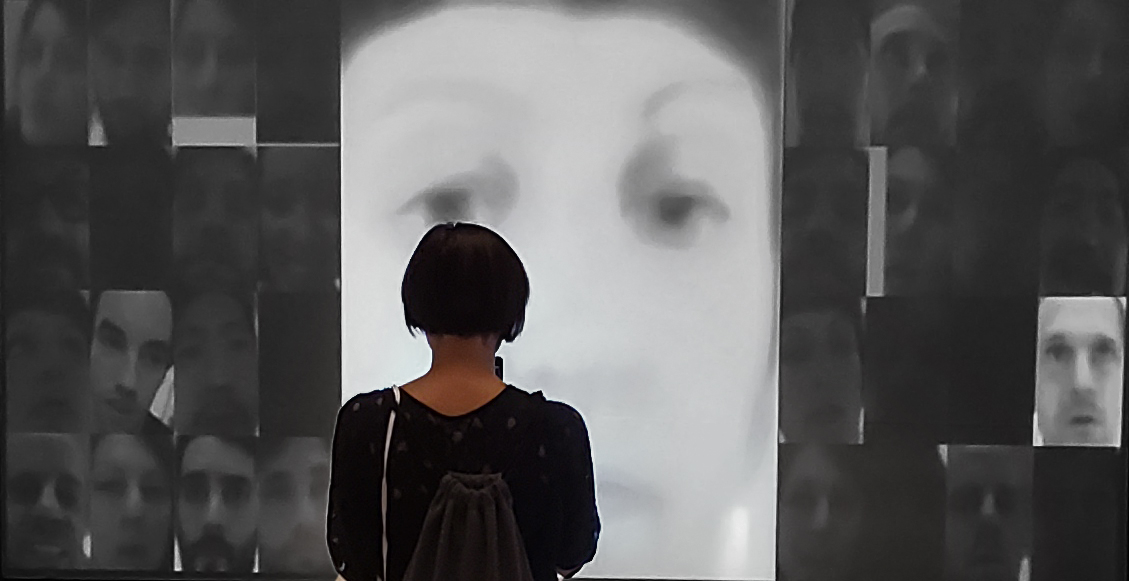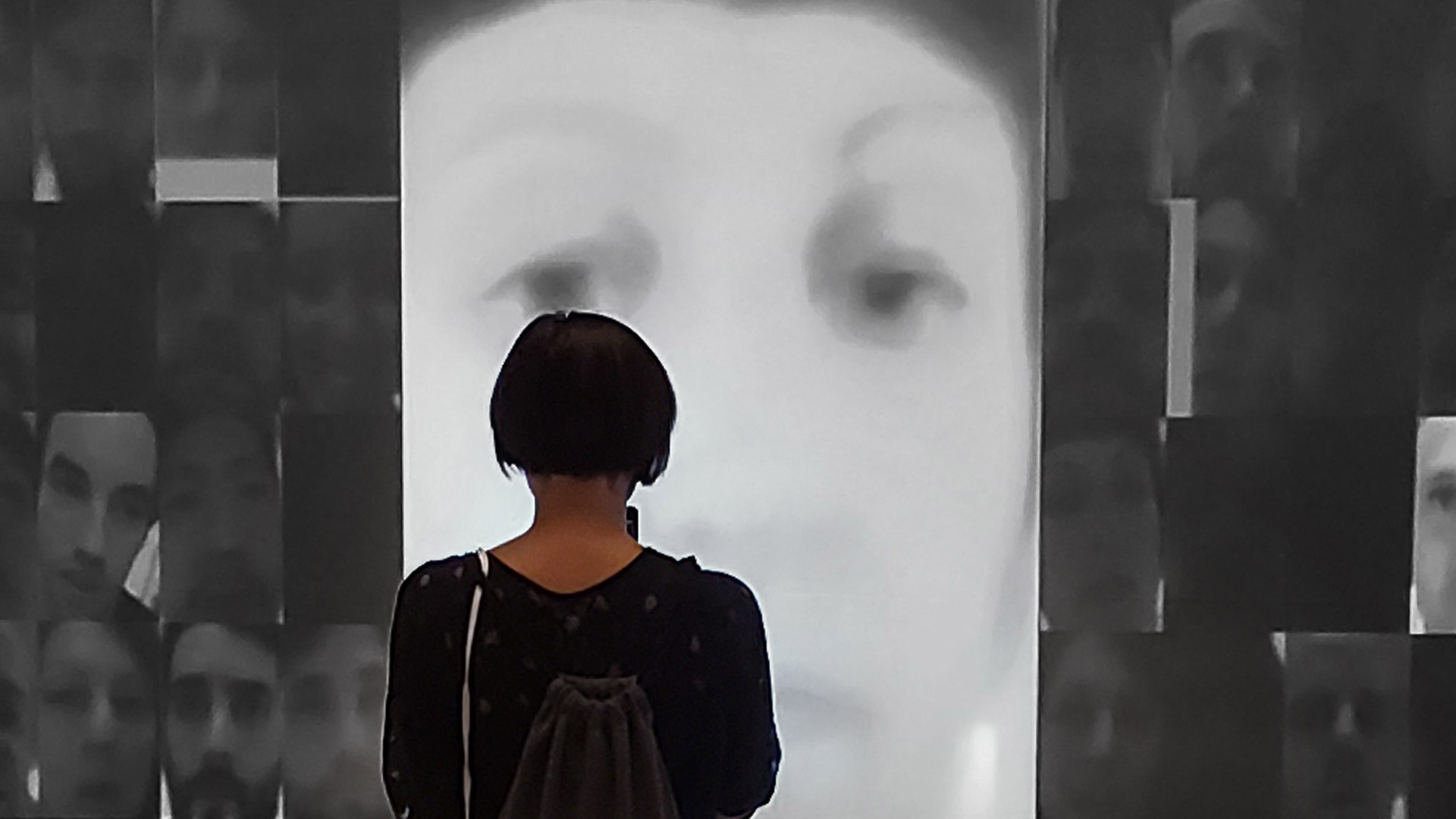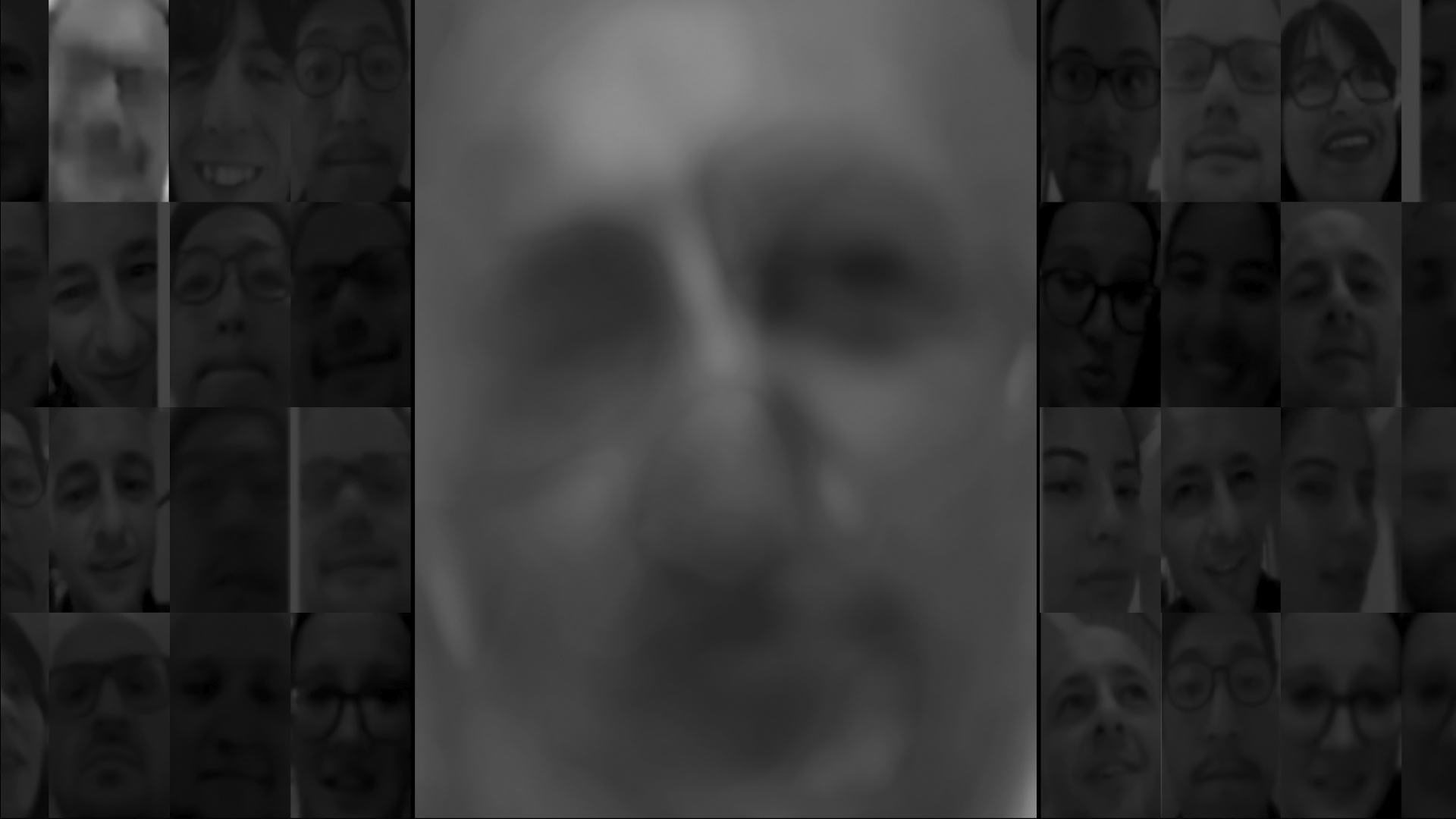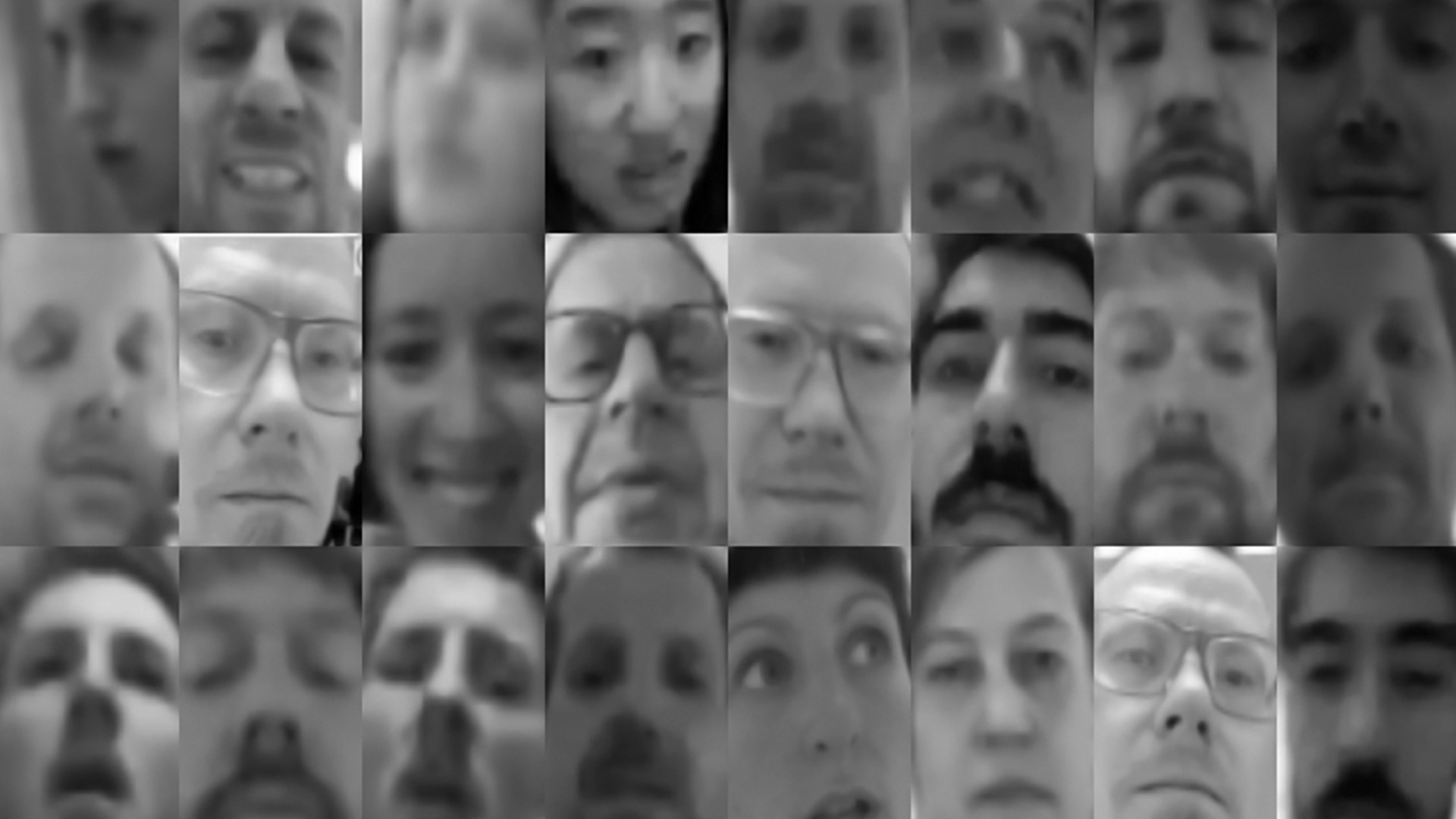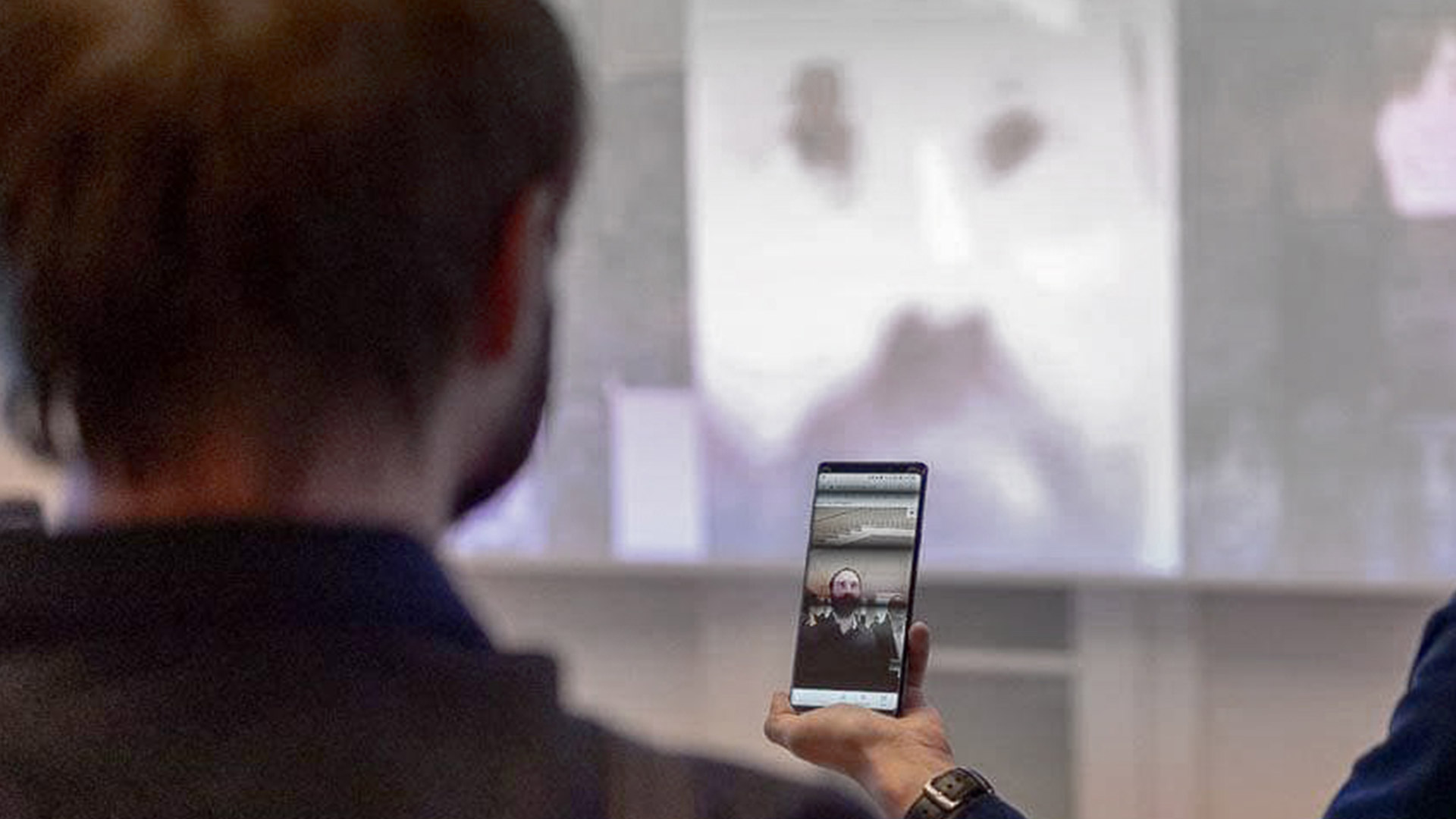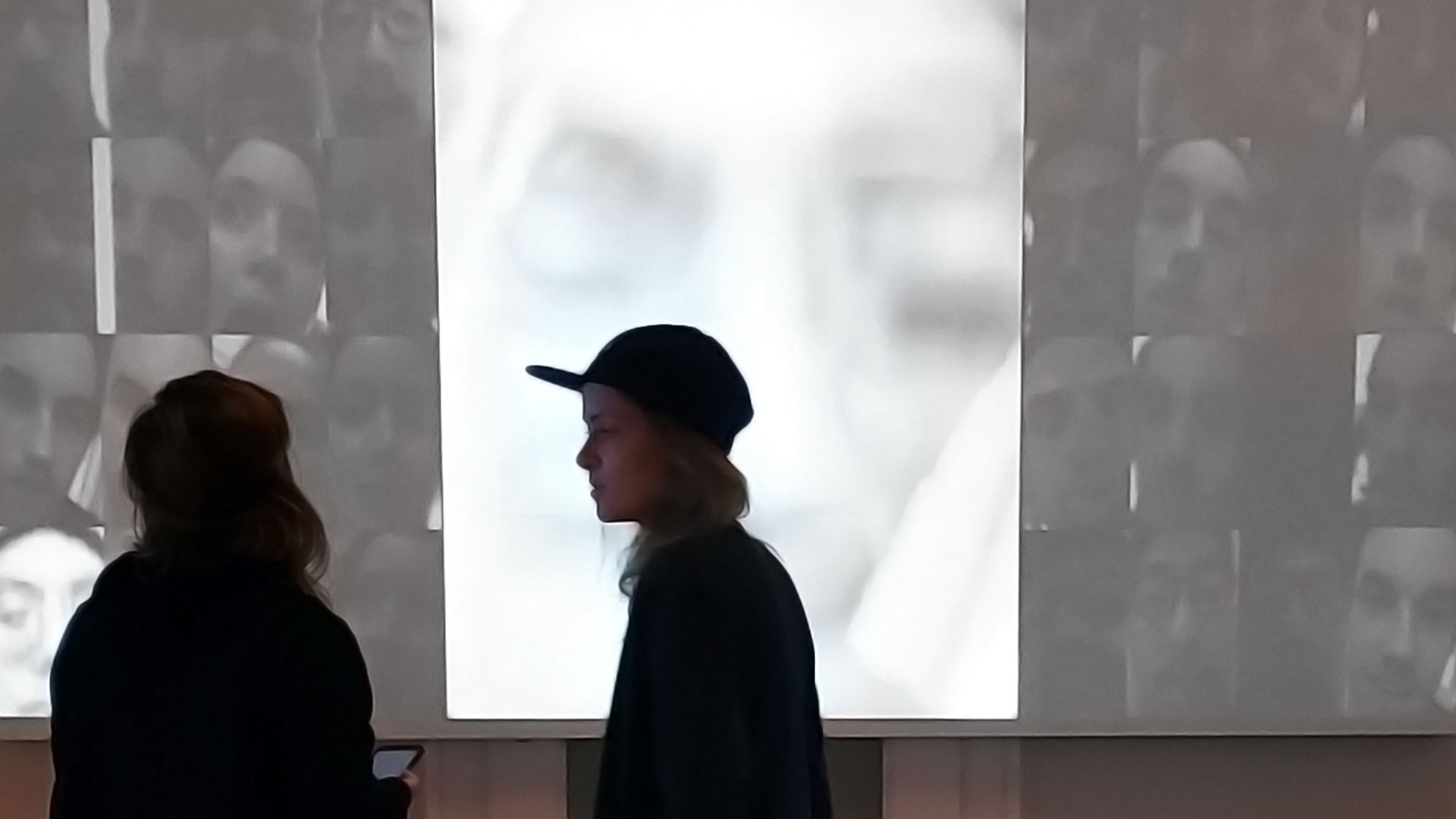interactive installation
CYNET art festival, Dresden, Germany 2018
Web-based interactive installation
Projection screen, web interface, smartphones, QR code system
Nevertheless – interactive explores perception, temporality, and self-recognition within digital participation. The project invites visitors to join a live web interface by scanning a QR code in the exhibition space. Once connected, the interface accesses each participant’s front-facing camera, projecting their live image at the center of a large screen mirrored from their device. Each captured face is stored within a visual grid that gradually fills and reconfigures itself, forming an evolving memory system that continuously records and overwrites its own contents. When no one is connected, the grid displays a looping animation of morphing faces, evoking the persistence and erasure of collective digital memory.
Viewers navigate the interface intuitively, learning through curiosity and trial. This process transforms spectators into participants whose actions and reflections reshape the installation in real time. The smartphone functions simultaneously as mirror and transmitter, linking self-regard with shared visibility. Through this networked system, Nevertheless – interactive reimagines the act of looking as mutual participation, generating temporary but communal experiences that blur the boundaries between individual perception and collective presence.
